Southport Village Voices
An E-Magazine by & for the Residents of Southport
Number 69, November 2015
|
|
|
The Route 6A version of the Yellow Brick Road, Photo: David Kapp
|
| |
|
|
|
|
|
|
|
I'm Thankful for Thanksgiving
|
Thanksgiving is my favorite adult holiday. Not for the turkey or the football; both are okay but neither is at the top of my list of 'favorite things.'
Many of my reasons for liking this holiday are for what it is not. Thanksgiving doesn't require frantic last minute shopping for the perfect present or just the right card. It's not a sad day, unlike some that remind us of the lives lost and the resources expended in making war. It's not a religious holiday unless you want it to be; it's ecumenical, it belongs to everybody. And it doesn't require much work (for men, that is, who we know cannot cook).
Mostly, however, I like Thanksgiving for what it is -- kind of low-key, the one day of the year when we're encouraged to pause and 'count our blessings' and remind ourselves of the good things in our present and past lives. Hopefully, for most of us, those good things include families and friends, physical and economic well-being, and happy memories.
It's ironic that the day after Thanksgiving, Black Friday, has become the busiest shopping day of the year. Having spent Thanksgiving being thankful for what they have, on the following day millions of Americans storm the malls to buy more stuff. Are we being manipulated, or what?
I'm trying to picture Governor Bradford and Massasoit, getting up from their first Thanksgiving meal together and making plans to head out to Walmart before the sun comes up.
It's not coming into focus.
-------------------------------------------
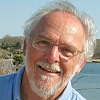 Welcome New Voices Welcome New Voices
We're always looking for residents who want to participate in Southport Village Voices and recently we've heard from a number of new contributors: Lynn Fulton did an interview and Jack Donovan wrote a poem for the October SVV. In this issue, Tom Kelleher has a piece on the Sherman Tank, Rich Vengroff writes about the Butterfly Ballot and Joan Bailey tells the story of "Tigger."
If you have a story, an essay, a review, a picture, etc. to share, please send it along. Any number can play.
|
|
 |
|
|
Veterans Day at Southport
2015
|
The Southport Veterans Committee invites the residents of Southport to assemble by the flagpoles at the Village Center on Wednesday, November 11 at 11:00 o'clock for a ceremony to honor our veterans. The following Southport residents, representing the five branches of the United States military service, will be honored. -------------------------------------------------------------------------------------------
Sig Aiken, January 22, 1922 -
U.S. Army Air Corps, Bombardier Navigator
June 1942 - November 3,1945
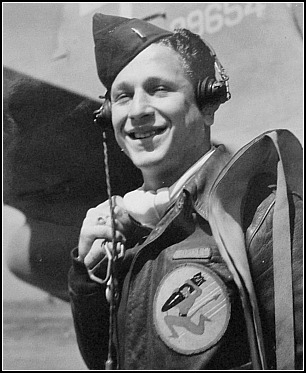 Sig Aiken grew up in the small town of Cockeysville, Maryland. His father, the owner of a local general store, died at a young age, leaving his 31-year-old wife with five boys aged 10 to three months. It was 1930 and America was mired in the Great Depression. But despite these hardships, when it was time to leave for college, Sig was able to enroll at New York University. Sig Aiken grew up in the small town of Cockeysville, Maryland. His father, the owner of a local general store, died at a young age, leaving his 31-year-old wife with five boys aged 10 to three months. It was 1930 and America was mired in the Great Depression. But despite these hardships, when it was time to leave for college, Sig was able to enroll at New York University. Part way through his education at NYU in the early 1940s, with the nation now engaged in WWII, Sig knew that he would be drafted so he enlisted in the Army Air Corps. He was allowed to complete his education, graduated in 1942 and entered the service at age 20.
Sig was trained to serve as a bombardier navigator in a Douglas A-20 attack bomber. He recalls that on his initial flight from Brazil to Africa, he was successful in guiding his plane half-way across the South Atlantic to microscopic Ascension Island for refueling, but on the following day he had trouble finding the coast of Africa! Eventually, of course, he located Africa, and led his plane safely there. In his three years of service, he guided his plane on 45 combat missions in North Africa and then north with the Italian Campaign as far as the Po valley.
Along the way, there were many harrowing incidents and many lost friends, but Sig's plane was never shot down. Among his "close calls" was the time his plane's landing gear was shot off; the pilot radioed him and asked, "Do you want go in on our belly or bail out?" Sig had seen soldiers who had bailed out being used as target practice by enemy planes. On the other hand, he knew that the plane's nose might separate from its body when landing without wheels. He opted for staying with the plane and he doesn't recall if the plane's two gunners were asked for their votes. In any case, they landed on their "belly'' and survived.
Sig was awarded the Distinguished Flying Cross for a mission in Italy where the target was a power plant. At the beginning of a bombing run, he told me, the bomb sight that he controlled would take over the controls of the plane from the pilot. Although the skies that day were filled with anti-aircraft flak, requiring lots of evasive maneuvering on his part, he managed to hit the target "on the nose." He describes is as "a pretty rough day."
Back in 1942, while Sig was still at NYU, he was attracted to a young woman passing him in a corridor and invited her to lunch. Lunch with Rita became a long conversation during which they forgot their classes and fell in love. Rita waited for him until after the war was over in Europe and and they could get married. He bought her a wedding ring with his poker winnings from his time in Italy. While they were on their honeymoon, on August 6,1945, the American bomber Enola Gay dropped an atom bomb on Hiroshima, and WWII drew to a close.
After the war, Sig worked at several jobs before settling into a long career in the life insurance business. In 2001 Sig and Rita moved from Baltimore to Southport to be near their two sons, Steve and Paul, and their four grandchildren. Now, at 94, Sig is a widower, his wife of 66 years died four years ago, on his 90th birthday. But in one way, Rita is still with him; he keeps a loving note she sent him on their 50th anniversary on his mantle.
William Beardsley, July 19,1932 -
U. S. Coast Guard, Petty Officer 3rd Class, Radarman
November 1951 - September 3, 1954 (Active Duty), November 1959 (Inactive Reserves)
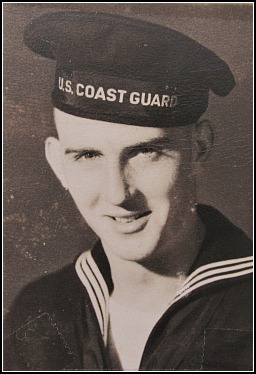 Bill Beardsley grew up in Wellesley, the son of an investment counselor and a homemaker. Life on the water has played a big part in his life, from his summer camp days through his tour with the Coast Guard and during his retirement years in Miami and on Cape Cod. Bill Beardsley grew up in Wellesley, the son of an investment counselor and a homemaker. Life on the water has played a big part in his life, from his summer camp days through his tour with the Coast Guard and during his retirement years in Miami and on Cape Cod. In 1951, a year after graduating from high school, Bill returned from a winter job as a deck hand on a fishing boat in Miami and told his parents that he was thinking about joining the Coast Guard.
A few days later he went to the enlistment office in Providence and signed on for eight years.
After completing basic training in Cape May, NJ, he was assigned as a seaman apprentice to the USCG Cutter "Spar," a sea-going buoy tender. The ship became famous in navigation history when, in 1957, it was one of a convoy of three cutters to first circumnavigate North America by sailing through the Northwest Passage from the Pacific Ocean to the Atlantic Ocean.
The Spar was responsible for maintaining buoys, search and rescue, provisioning lightships, and moving crews back and forth, among other duties. In 1952, Bill was transferred to New London, CT for Radar School, and earned a rating of Seaman 1st Class with Radar Designator. He was later upgraded to Petty Officer 3rd Class as a Radarman. His duty on the bridge of the Spar was to provide radar sightings as an adjunct to navigation.
"I loved boats and the sea," Bill says, "but I had no real respect for the value of education. I learned that in the Coast Guard." He began to take correspondence courses at colleges through the United States Armed Forces Institute and discovered that he had an aptitude for learning.
While still in the Coast Guard, Bill applied to attend Boston University but was told that he wasn't academically prepared for college; his application was rejected. However, he was not about to be put off. He sought an interview with the dean of admissions and convinced him that he was ready to buckle down and work at his studies. Bill was accepted to BU on a provisional basis and, after completing his three years of active service in the Coast Guard, he enrolled in the fall of 1954, graduating with a BS degree in business administration in 1958.
Bill's first job after college was as a copywriter for H. E. Harris in Boston, the largest stamp dealer in the world. Harris advertised widely and it wasn't long until Bill was promoted to assistant director of advertising and sales promotion. At Harris he met Marilyn Goldfarb when she came to work as a copywriter. They began to date and, on June 6, 1960, they eloped to Alexandria, VA. They have two sons - Bruce and Brian, and five grandchildren.
While still employed at Harris, Bill saw an ad for a job that matched his qualifications, sent in his resume and was invited to New York for an interview with Dow Jones & Company. In 1960 he accepted the job of circulation promotion manager for The Wall Street Journal, which led to a varied, 25-year career with Dow Jones.
Bill retired in 1984 and the Beardsleys moved to North Falmouth. But two years later, they "followed the sun" and moved to the Florida Keys, shuttling back and forth between the Cape and the Keys every six months. They finally settled at Southport in 2010.
In retirement, Bill has been fully occupied with a variety of interesting activities - metal detecting, flying radio-controlled air-craft, writing for outdoor publications, operating a charter boat business out of Falmouth Harbor, restoring a 35-year-old classic kit car, and lately, making presentations to Cape Cod middle school health classes about the consequences of smoking.
"I take great personal pride in having served in the Coast Guard" Bill says, "and I will be forever grateful that it changed my life completely."
Charles I Brink, II, September 13, 1922 - June 27, 2010
U. S. Army, Enlisted Reserve, 1941-1943;
Corpsman, Active Duty, 1943-1946;
Reserve,1948-1950
U.S. Naval Reserve, Medical Corps, Commissioned Captain, 1954-1982
Ch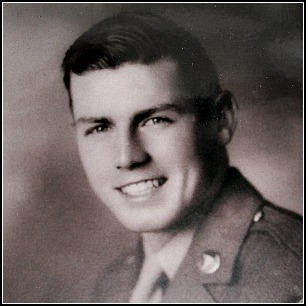 arles Brink, a native of Newton, Massachusetts, was the son of John Brink, the owner of C. I. Brink, a well known Boston sign company that made the original CITGO sign in Fenway Park; his mother Frances was a homemaker. When WWII interrupted his undergraduate education at Norwich University in Vermont, Charles enlisted in the Army Reserve. He was sent to Chicago where he was trained for service in the Medical Corps; he served as a surgical technician during his active duty years. arles Brink, a native of Newton, Massachusetts, was the son of John Brink, the owner of C. I. Brink, a well known Boston sign company that made the original CITGO sign in Fenway Park; his mother Frances was a homemaker. When WWII interrupted his undergraduate education at Norwich University in Vermont, Charles enlisted in the Army Reserve. He was sent to Chicago where he was trained for service in the Medical Corps; he served as a surgical technician during his active duty years.
"I used to scrub in at surgery," he was quoted as saying. "I would tie knots and sutures just as a medical doctor did. I was performing more procedures than I would have done at a teaching facility."
Following the war, he earned his BS degree, and in 1950 his Doctor of Medicine degree at the University of Illinois. Returning to Massachusetts, he interned at Worcester City Hospital and completed his residency at Worcester Memorial and the New England Medical Center at Tufts University. In 1959, he opened his practice of internal medicine in Worcester and continued it for 40 years. While practicing medicine, Charles had an extraordinary career of service to the military and to his community.
He was instrumental in establishing the Naval Reserve Chapter in Worcester, serving as its first president in 1959 and as a captain in the Naval Reserve for the remainder of his life. He was a consultant to the Surgeon General for Naval Reserve Medical Registry Affairs, the commanding officer of the U. S. Naval Reserve Regional Medical Center and editor of the Worcester Medical News, among many other assignments.
As director and an executive committee member of the Mohegan Council, Boy Scouts of America, for many years, Charles provided free physical exams for hundreds of scouts each year. His pro bono medical services also extended to those involved with community service, such as police and religious organizations. For 33 years, he shared his knowledge as a lecturer at the UMass Medical School and at Assumption College in Worcester. His civic interests extended to the Rotary Club and Senior Center in Shrewsbury, where he lived.
Dr. Brink had a special interest in two issues that came to prominence during his long career -- affordable medical care and rehabilitation practices for the clinically infirm. To address the first, in the early 1980s he and nine other doctors established the non-profit Central Massachusetts Healthcare Foundation, and he served as its first president. At the time, the organization had 100,000 subscribers.
His work to improve rehabilitation practices was expressed through the many positions he held with the Worcester Rehabilitation Center and the Massachusetts Rehabilitation Commission, and in his teaching at the Institute for Social and Rehabilitation Services at Assumption College.
Charles's first marriage ended with his wife's untimely death, but not before they had four sons -- Charles, Frederick, Jonathan and Christopher. He was a widower when he met Barbara one day in the halls of Worcester Memorial Hospital, where she was a radiologic technologist. Barbara was a single mother of a daughter, Kim, at the time, and had noticed the handsome doctor. "I had a kind of crush on him," she says, "but we had never talked." That day he stopped and asked her to show him what goes on in the lab's darkroom. "So I took him into the darkroom and things developed," she quips. Their marriage lasted for more than 28 years before Charles died in 2010 at age 87, a grandfather to 12 children.
Charles and Barbara lived in Shrewsbury during their working lives, but Charles's family had had a summer home in North Falmouth for many years, where he enjoyed swimming and boating before they married. So when it was time to find a retirement home, they came to the Cape and moved to Southport in 2001.
When Charles retired in 1999, the mayor of Worcester presented him with the key to the city for his decades of medical, military and civic service to the city and his country. And at a reception in his honor, Charles said, "My life has been very rewarding. I have a wonderful marriage, family, and I had the opportunity to help people by practicing medicine."
A colleague summed up Dr. Brink's life by saying, "As exemplified by his life and accomplishments, Charles Brink was indeed the captain of many ships."
Donald Rose, December 4, 1935 -
U. S. Marine Corps, Master Sergeant, July 2, 1953 - July 2, 1956,
Active Duty, July 2, 1953 - July 2, 1956; Reserves, 1958 - 1982
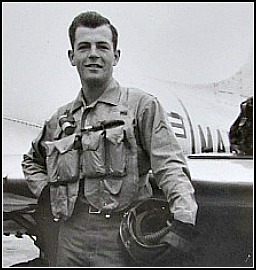 Without appropriate mechanical and technical support, ships would never sail, tanks would never roll and planes would never fly. Don Rose has spent a good part of his 80 years, starting at age 17, making sure that the aircraft of the US Marines will be ready to fly whenever and wherever they are needed. Without appropriate mechanical and technical support, ships would never sail, tanks would never roll and planes would never fly. Don Rose has spent a good part of his 80 years, starting at age 17, making sure that the aircraft of the US Marines will be ready to fly whenever and wherever they are needed.
A native of Taunton, Massachusetts, Don enlisted in the Marines in July 1953, directly after graduating from high school, and just as the Korean War was coming to an official end on July 27, 1953. But the armistice did not bring an end to the presence of the US military in South Korea.
After basic training at the Marine Corps Recruit Depot, Parris Island, South Carolina. Don was sent to the Navy Jet Mechanics School in Memphis, Tennessee, then assigned for one year to a fighter squadron at the Marine Corps Air Station in Cherry Point, North Carolina. Following that, he was stationed with the Marine Air Group 11 in Japan, where he concluded his three years of active duty service in July 1956.
Don joined the Marine Air Reserves, serving with the Marine Attack Squadron 322 at the South Weymouth Air Station in 1958. There his work as assistant line chief, servicing the Douglas "Skyhawk" won him a rare meritorious promotion and high praise from his commanding officer, who said: "His "exceptionally outstanding work and ingenuity and...his capacity for authority and military dignity has won the respect of all the Marines in the squadron." In the five years preceding Don's retirement from the reserves in 1982, he was the line chief, making sure that aircraft were ready for flight in the shortest time possible.
After leaving active service with the Marines in 1956, Don married Olivia Caras, a young woman he had known from his high school days, when he was on the Taunton football team and she was a majorette. They settled in Raynham and raised two sons there - Donald and Christopher. Don went to work for the Cabot Corporation and had a 40-year career in research and development and technical services with the the company. And before moving to Southport in 2002, he was active in coaching Little League, Junior Football and Babe Ruth baseball teams. He has belonged to the Raynham Chapter of the American Legion for 45 years, and to the Marine Corps Aviation Association and the Portuguese American Association.
When I asked him what his best memory of his years in the service and in the reserves, he said that he had seen plenty of sad events but that the "comradeship" he has shared with others in the service has been among his most satisfying memories. His long commitment to the defense of our country is to be admired and appreciated.
George James Webber, February 28, 1926 - February 9, 2014
United States Navy, Yeoman 2nd Class,
December 1943 - May 1946
George Webber was born and grew up in Wilmington, Massachusetts. In December 1943, just 17 years old and six months before he was scheduled to graduate from high school, he enlisted in the U. S. Navy. George became one of 411,429 naval recruits to be trained at the Sampson Naval Training Station on the shores of Lake Seneca, New York.
In March 1944 he left Sampson on a troop train for the three-day trip to Algiers, Louisiana, where the Tank Landing Ship LST 541 was waiting for its crew in the Port of New Orleans. Following a shakedown cruise to Panama City, Florida, the crew headed back to New Orleans, boarded the LST 451 and sailed for Europe. An 18-day trip as part of a large convoy brought them to Milfordhaven, Wales on May 6, 1944, where they proceeded to ready themselves for the Normandy Invasion.
The LST 541 landed on Juno Beach in the British Sector a month later, on D-Day, June 6, 1944 and off-loaded troops from the Canadian Army. While the ship was beached, it was attacked by a dive bomber but, fortunately, only one man was injured. And since George was otherwise occupied on D-Day, his mother accepted his Wilmington High School graduation diploma for him on that day.
In August 1944, George was transferred to another LST, which crossed the English Channel repeatedly in the following months, carrying men and materials east and wounded troops or prisoners west. On Victory in Europe Day in 1945, George's ship sailed to the occupied Channel Island of Jersey, just off the coast of France, to remove German occupation troops and transport them to POW camps in England.
In July 1945, George boarded an LST for the trip home to the United States and visits to Albany NY, Searsport ME, New York City, Norfolk VA and Cuba. He was discharged as Yeoman 2nd Class in May 1946.
After the war, while attending electrical school, George went to work for New England Telephone & Telegraph and spent the next 38 years in their employ. Initially, he traveled throughout New England as part of the Central Office Installation Group, then after earning his undergraduate degree at Northeastern University, he became a supervisor in the Switching Department. He retired in 1985.
During that time, George and a friend invited Barbara Spence and her friend to a hockey game. Barbara declined the invitation but when her friend and the two young men showed up at her door, she couldn't refuse to come with them. Barbara enjoyed the hockey game and she liked George even more. They married in 1955, raised four children -- Thomas, Leslee, Sally and Robert -- and spent almost 60 happy years together.
George was active in the Massachusetts LST Association and he and Barbara attended the organization's annual reunions for more than 30 years. They enjoyed being involved in the lives of their nine grandchildren and spending their retirement winters with friends in Florida. In 1999, George and Barbara moved to Southport, becoming two of the first 100 people -- "The Pioneers" -- to move into our community.
Interviews by David Kapp
Photographs courtesy of the veterans or their spouses
|
|
NON COMPOS MENDES
Bob Mendes
|
- Congratulations to our new Board of Governors, but I'd like to see a change in the way we announce elections. I think the winners and losers should be advised of their status prior to the announcement at the Annual Meeting. Everyone who runs for the board is a volunteer and those not elected should have the option of attending the meeting or not. It must be awkward to sit in the midst of a group of people receiving congratulations when you've just received a major disappointment. Let's show some class and compassion in future elections.
- I recently started writing my second novel (hoping my first will soon be published) and realized that writing a novel is like being God. I can create people or kill them with impunity. I can make the world behave the way I want it to and even change events post facto. To paraphrase Mel Brooks, "It's good to be God."
- Why does it always rate a front page story when a shark gets beached? We live on Cape Cod, on the shores of the Atlantic Ocean for heaven's sake. It shouldn't be news. Let me know when a shark gets beached in Indiana. That's a front page story.
- Overheard at Men's Coffee: "I know it's true. I heard it with my own eyes."
- Still working on that column on procrastination.
- The Information Room Ah yes, information. That room epitomizes the term "Information Overload." There is so much going on in that room that there's no space to turn around. Are items screened before they go up? Does anything ever get taken down? I recently read a notice dated November, 1918 about an armistice had been signed between Germany and France.
- I can't keep track of proposed casino sites anymore. Every time I pick up a paper a new one is proposed. I'm at the point where I don't even know how many we're getting. Massachusetts will soon be Nirvana for gamblers.
-
I wish someone would write me a letter. No one writes letters anymore. Where will future biographers of the famous get their information? From e-mail? Read a bio of any historic figure and you'll see that most of what has been written about him (her) is from correspondence and diaries. Sure, official records show official information, but letters and diaries show the person behind the information. That's no longer available to us. Too bad.
FINAL THOUGHT FROM MISS INFORMED
Dear Miss Informed:
Ah live in a condo community on Cape Cod called Southport and ah have a question: This here garbage disposal of mine sometimes clogs up, well, not ezactly clogs up, but sorta chokes up, if yew know what I mean. The garbage, lak coffee grinds and meat leftovers and stuff lak that, ya know, kinda gargles in the drain, then sorta just hangs aroun', ya know? Lak it don't go down the way it should. Ah wonder if ah'm doin' somthin' wrong?
Sincerely,
Garbage Problem
Dear Garbage:
You dummy! What the hell are you doing with a garbage disposal in the first place? You're part of the problem at the waste treatment plant. Anyone on Cape Cod -- especially at Southport -- who has a garbage disposal should get rid of it. It's illegal to begin with and it's also illogical. You should know that our waste treatment plant can't handle solid waste in that volume.
Think,
Miss Information
|
|
Tigger: A Cat's Tale
story & photo by Joan Bailey
|
"Tigger," a long, lean, short-haired tabby first appeared on my deck in late March. He became a regular visitor in early May and that is when I began leaving food out for him. He would appear at all times of the day and night, frequently sitting in front of the patio door with a look that asked, "Why am I on the outside looking in while you're on the inside looking out?"
He's a beautiful caramel and white cat, so I named him Tigger and began to befriend him by staying on the deck with him while he ate. Tigger slowly came to trust me, showing his affection by rolling around on my feet, allowing me to pet him and eventually to hold him. I was able to bring Tigger inside in mid-October. He is a love bug! He's a lap cat, very playful, and likes to cuddle.
I took Tigger to my veterinarian to have him checked out and confirmed that he is a neutered male, approximately two years old. He tested negative for feline aids, leukemia, worms and parasites. He's got no respiratory or dental issues and no ear mites. He received an initial rabies shot. In brief, he's a very happy, lovable, healthy 12-pound cat.
Because Tigger is so loving, I believe that he once had a caring home environment but for reasons unknown was abandoned and allowed to shift for himself.I feel strongly that pet cats should not be allowed to roam out of doors where they can become both prey and predator. Although Tigger would dearly love to resume his outdoor life, I can't allow it.
I already have two cats, one is an alpha male Maine Coon cat. So although I love this cat, it's not practical for me to adopt him. I feel sure that Tigger would be happy as the only cat in a household, and I'm hoping that someone will feel as I do and will consider providing Tigger with a loving indoor environment. If you would like to meet him please call me at 508-477-0175.
Joan Bailey, 17 Bonwood Drive
|
|
HISTORY
"Fury" -- A History Lesson from the Movies
by Tom Kelleher
| |
Once in a while, Hollywood gets it right. In recent years we have been exposed to a number of war films that have attempted to accurately and realistically portray the events that are central to the movie's major theme. Examples that come to mind are the opening 30 minutes of Saving Private Ryan and the two acclaimed HBO miniseries, Pacific and Band of Brothers.
Recently, I watched the movie Fury, starring Brad Pitt as a veteran tank commander trying to keep his crew alive. Ultimately, he finds himself in a hopeless situation, unable with his single tank to halt the progress of an entire German battalion.
The movie is well done and, although the events are fictitious, gives the viewer a realistic view of the horrors of tank warfare during WWII. If you're a history buff, the film is also important on another level because it raises questions about the effectiveness of the Allies's premier battle tank -- the Sherman M-4 medium tank.
T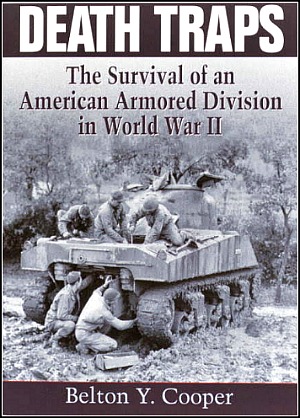 he movie prompted me to do a little online research on just how effective this "weapon of mass destruction"actually was. Although the Sherman tank was "Hell on Wheels,"many considered it to be a death trap. (1) U.S and Allied tank crews suffered extremely high casualty rates due to several factors. The Sherman used a gasoline-powered engine whereas most tanks of the era, especially the more durable and powerful German Tiger and Panther tanks, ran on safer, less flammable diesel-fueled engines. Even though the Sherman Tank had decent firepower (a 75 millimeter turret gun), the awe inspiring Tigers featured a powerful 88 millimeter gun that could easily puncture the relatively thin armor of the Sherman. As one former American WWII veteran stated,"If you've seen movies where people come out of the tank all aflame -- I saw that...The German tank had an 88...and it just blew the Sherman tank to pieces until there was nothing left but smoke and fire."(3) he movie prompted me to do a little online research on just how effective this "weapon of mass destruction"actually was. Although the Sherman tank was "Hell on Wheels,"many considered it to be a death trap. (1) U.S and Allied tank crews suffered extremely high casualty rates due to several factors. The Sherman used a gasoline-powered engine whereas most tanks of the era, especially the more durable and powerful German Tiger and Panther tanks, ran on safer, less flammable diesel-fueled engines. Even though the Sherman Tank had decent firepower (a 75 millimeter turret gun), the awe inspiring Tigers featured a powerful 88 millimeter gun that could easily puncture the relatively thin armor of the Sherman. As one former American WWII veteran stated,"If you've seen movies where people come out of the tank all aflame -- I saw that...The German tank had an 88...and it just blew the Sherman tank to pieces until there was nothing left but smoke and fire."(3)
It's little wonder that the British nicknamed the Sherman the "Ronson" -- "It lights up first time, every time." Polish soldiers referred to the Sherman as "The Burning Grave." The superiority of German tanks over those of the Allies resulted in a loss of men and machines that is hard for us to grasp. Apparently it was just as dangerous, in the heat of battle, to be inside a Sherman as it was to be outside. During the European Campaign, the 3rd Armored Division suffered a 58% loss rate among all the Sherman tanks it deployed. (1)
So how, given these dreary facts, did the Sherman remain the major battle tank for the Allies (with the exception of Russia, who produced the famous T-34 tank) on the battlefields of Europe, Africa and Asia during WWII? Several factors can be noted. As the war progressed, Allied tank commanders improved their coordination tactics, and better ways to store ammunition inside the tank were developed, making it somewhat less susceptible to fire and explosion if it took a direct hit. Another factor that cannot be ignored is the good old ingenuity of young American repair crews who, growing up in the 1930s, found it necessary to know how to fix things: cars, factory machines, farm vehicles, bicycles, etc. The mechanical aptitude of the repair crews kept many Shermans running.
|
| |
Thank you, Rosie the Riveter!
|
Moreover, we often read that WWII was a war of production. As Paul Huard writes, "The Sherman was renowned for its mechanical reliability, owing to its standardized parts and quality construction on the assembly line." (3) Nicholas Hopkins states, in an article in the University of Illinois Archives, "The popularity of the Sherman Tank was not due to its superior design, but its availability and mass production." (2) And Huard noted that various companies, such as Ford Motors, cranked out nearly 50,000 Shermans during WWII. (3)
By contrast, due to specialized costs, slower production capabilities and expensive operation costs, the Germans turned out only 1300 Tigers. The fact that American industrial prowess did as much to win the war as those on the front lines is never more evident than in the area of tank production. Despite the fact that Sherman tanks were outperformed and outclassed on the battlefield -- a point made accurately in the movie Fury -- for every one of them destroyed or disabled, there was always another to take its place. The Axis powers did not have that capability.
SOURCES
Belton Cooper, Death Traps, 1998
Nicolas Hopkins, "A Poor Defense: Sherman Tanks in WW2", www.archives.library.illinois.edu
Paul Huard, "The M-4 Sherman Tank Was Hell on Wheels -- And a Death Trap", October 26, 2014. www.realcleardefense.com
See Also: en.wikipedia.org/wiki/Fury_(2014_film)
|
POETRY
Ode to Craft Beer
by Lydia Biersteker
| |
|
|
Little Things Mean a Lot
The "Butterfly Ballot" and the leadership of the "Free World"
|

|
The 2000 face-off between Republican George W. Bush and Democrat Al Gore was one of the closest Presidential races in United States history. Gore won the popular vote nationally, 48.4% to Bush's 47.9%, a victory margin of over half a million votes. However, Bush won the Electoral College and hence the Presidency by a vote of 271 to 266.
| 
|
With the Electoral College vote so close, Florida's 25 "electors" became critical. The late night vote count in Florida, network TV projections and subsequent changes in projections only heightened the tension.
Most of us remember the drama surrounding the popular vote count in Florida, the hanging chads and the dimpled and "pregnant ballot marks." The U.S. Supreme Court, in a 5-4 highly partisan decision stopped the ballot re-count in Florida, effectively assuring victory for the Republican standard bearer. The controversy was to continue for many years to come in books, magazines and made-for-TV movies.
What many people missed in this story is how a well-intentioned Democratic supervisor of elections in Palm Beach County may have inadvertently determined the Presidency of the United States of America and the fate of the Free World.
The 2000 Presidential election in Florida, and its 25 Electoral College votes, went to Bush by a mere 537 votes out of nearly 12 million cast in the state. The weakness of the punch card system used throughout Florida that year was certainly a factor, with many ballots not even registering a vote for President.
In preparing for the election, Theresa LePore, Palm Beach County supervisor of elections felt that the length of the ballot, which included seven presidential candidates in addition to numerous candidates for state and local offices, would present a problem. The small size of the print necessary on the traditional ballot would make it difficult to read, especially for elderly voters, of which there were many in her county. She therefore helped to design and implement what she thought would be a simpler ballot. Rather than the usual one-sided page listing all candidates in a single column, the ballot was changed to two pages -- the so-called "butterfly" ballot you see below.
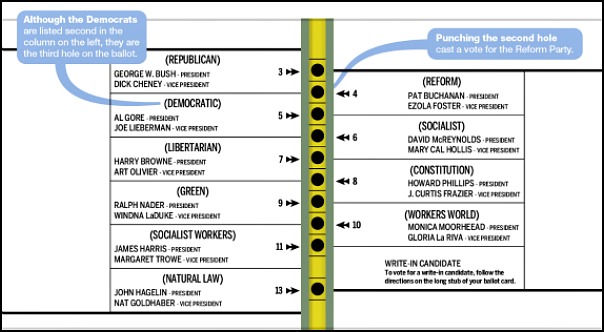
On the "butterfly" ballot, the holes to punch to vote for a candidate appeared between the two pages, with some candidates' names listed to the right and some to the left. If you look at the ballot, you will find Bush listed first on the left hand page; if you supported him you punched the first hole. Gore is listed second, below Bush. However, Pat Buchanan's name is listed first on the right side of the ballot. If you supported Gore, you needed to punch the third rather than the second hole. If you punched the second hole, regardless of your intention, your vote went to Pat Buchanan instead of to Al Gore.
Rather than finding the new large print ballot easier to read, many people were confused by the way it was organized and inadvertently voted for Buchanan when they thought they were voting for Gore. Buchanan, the right wing Reform Party candidate for President, never even campaigned in generally liberal leaning Palm Beach County, yet he received more votes there than in any other county in Florida (3411 in total, nearly three times his total in the county where he came in second).
If as few as one in four Palm Beach County votes were cast in error, i.e., cast for Buchanan but intended for Gore, the election in Florida and in the nation would have gone to the Democrat Al Gore.
I have tested the thesis that the ballot was confusing on college students in my political science classes. After showing an image of the ballot to several hundred students, I asked them which hole they would punch if they wanted to vote for Gore. Many were as confused as some of the voters in Palm Beach County. They too ended up voting for Buchanan after being instructed to vote for Gore.
Think of the counterfactuals: The history of the next eight years might have been very different. What would have been the response to 9-11? Would we have invaded Iraq and Afghanistan? Would the economic crash of 2008 have happened? Would Republicans have regained the White House in 2008? Our first black President might never have run, much less been elected. We will never know. A simple effort by a well-meaning county employee to make the ballot easier to read may have changed the course of world history.
|
|
Underwear
by Ernest Ruber
|
Thinking Outside The Box.
A Thing to be Admired.
To break your routine.
To do something a different way.
To exercise your imagination.
When I was young
We were poor immigrants.
I didn't like to think myself poor
Or an immigrant. Though
I had few of socks and underwear.
And so as the boy directs the man
Today I have many pairs of socks
And underwear.
I don't even have to wash them
For ten days
Or so.
My poor dead wife.
Who was with me
When in the Military in 1955
Would iron!
And fold underwear,
Just so!
In the Army Way.
We used to say
There's a right way,
A wrong way,
And the Army Way.
(which I thought was often the same
as the wrong way)
|
Back in civilian life,
I said to her,
Don't bother yourself.
And took over the job
And Thinking Outside the Box!
Stopped The Folding.
Now I just separate the items.
Lay them flat
First, shorts on the left
And when complete,
Then shirts on the right
And randomly,
Socks tossed
To the other side of the bed.
But this morning
It came to me,
I could
Think Outside The Box Again!
Not be a slave to habit.
Now I began to toss out the Socks first
Then came the Shirts
One, two, three, four
I glanced at a pair of Shorts
And resolutely ignored them.
It was not its turn.
Five, six... Shirts... more to go
I started to feel
A strange force taking hold of me
I fought it!
Finally, I could not resist.
Undershirts still waiting,
Yet unsorted,
I seized a pair of Shorts,
And laid it flat.
I glanced at waiting shirts still in the pile
And took up another pair of Shorts.
and then another
August 28, 2015
Photo: Carole Bloom
|
|
|
Out & About at Southport
| |
Congratulations to our newly elected Board of Governors (left - right):
Bette Mendes
Alan Judelson
Dan Riley
Bob LaRocca
Roy Reiss
Photo: Andy Jablon
|
| |
Guests at the Southport Rockers's Dance, Photo: Larry Cron
|
|
| |
Southporters at the start of the GirlyGirl RunWalk
|
|
| |
Residents of Southport were among those who enjoyed a walk at South Cape Beach
on Columbus Day. Photo: Andy Jablon
|
|
|
Contributors to the
November 2015 Edition of
Southport Village Voices
|
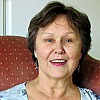 Joan Bailey grew up in New York City in the borough of Queens. A nationally Certified Cancer Registrar, Joan worked as cancer program coordinator for the five hospital divisions of the Catholic Medical Center of Brooklyn and Queens for 14 years. Having vacationed on the Cape since 1978, she purchased a home in 1987 and moved to the Cape in 1989. After relocating she was employed by Cape Cod Hospital as assistant director of the Medical Records Department and supervisor of the Cancer Registry. She retired and moved to Southport in 2008. She loves animals, e specially her two indoor cats Sugar and Lizzie, and enjoys the theater, ballet and music. Joan Bailey grew up in New York City in the borough of Queens. A nationally Certified Cancer Registrar, Joan worked as cancer program coordinator for the five hospital divisions of the Catholic Medical Center of Brooklyn and Queens for 14 years. Having vacationed on the Cape since 1978, she purchased a home in 1987 and moved to the Cape in 1989. After relocating she was employed by Cape Cod Hospital as assistant director of the Medical Records Department and supervisor of the Cancer Registry. She retired and moved to Southport in 2008. She loves animals, e specially her two indoor cats Sugar and Lizzie, and enjoys the theater, ballet and music.

Lydia Biersteker grew up in Somerville, MA. She met her husband Dale on the beach at Falmouth Heights in 1969, while he was stationed at Fort Devens. After Dale retired in 2005 from his executive position with the USPS, they moved to Vero Beach, FL but decided that they preferred New England. They moved to Southport in 2011. Dale plays golf, and Lydia likes gardening, walking, writing poetry and short prose, exploring genealogy, and lunching with friends. Together, they enjoy dining, exploring wineries and brew pubs, walking the trails of Cape Cod, traveling and playing with their grandkids, who live on the North Shore.
 David Kapp, with his wife Billie, moved from Connecticut to Southport in 2009. David retired from a career as a university library administrator, after working in the libraries at Brandeis, Harvard and the University of Connecticut. He was a building consultant for the planning of a number of major university libraries and was, for many years, the editor of Connecticut Libraries. Billie enjoyed a career as an educator and social sciences consultant. The Kapps are frequent visitors to Hawaii where their daughter, son, grandson and many other family members live. David Kapp, with his wife Billie, moved from Connecticut to Southport in 2009. David retired from a career as a university library administrator, after working in the libraries at Brandeis, Harvard and the University of Connecticut. He was a building consultant for the planning of a number of major university libraries and was, for many years, the editor of Connecticut Libraries. Billie enjoyed a career as an educator and social sciences consultant. The Kapps are frequent visitors to Hawaii where their daughter, son, grandson and many other family members live.
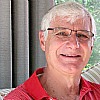 Tom Kelleher grew up in Lowell, MA and stayed in that area after marrying Kathryn, his "college sweetheart" and wife of 43 years. After raising a family of five children and somehow paying for five private college educations, Tom and Kathryn retired to Southport in August 2014. Tom pursued a career in public and private education that spanned 42 years. He was a teacher and administrator at Dracut High School and later principal at Nashua Catholic Regional Junior High in Nashua, NH. Upon retirement and prior to moving to Southport, Tom took a "fun" job as a part-time museum teacher and history tour guide at Lowell National Historical Park. In addition to history, Tom's other passion is singing and playing guitar in various "open mic" and song circle venues in the Falmouth/Sandwich area. Tom also performs for patients at the Tradewinds Adult Day Care Center in Sandwich. Tom Kelleher grew up in Lowell, MA and stayed in that area after marrying Kathryn, his "college sweetheart" and wife of 43 years. After raising a family of five children and somehow paying for five private college educations, Tom and Kathryn retired to Southport in August 2014. Tom pursued a career in public and private education that spanned 42 years. He was a teacher and administrator at Dracut High School and later principal at Nashua Catholic Regional Junior High in Nashua, NH. Upon retirement and prior to moving to Southport, Tom took a "fun" job as a part-time museum teacher and history tour guide at Lowell National Historical Park. In addition to history, Tom's other passion is singing and playing guitar in various "open mic" and song circle venues in the Falmouth/Sandwich area. Tom also performs for patients at the Tradewinds Adult Day Care Center in Sandwich.
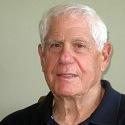 Bob Mendes Bob Mendes began his career as an advertising copywriter at Doyle Dane Bernbach in NYC before becoming senior vice president of marketing for a west coast department store chain. He left that position to start Pacific Sports, a sports and general marketing agency. There he developed "The Reading Team," a children's literacy program sponsored by the NFL and the American Library Association, using NFL players as literacy role models. Bob is the author of "A Twentieth Century Odyssey, the Bob Mathias Story." After retiring, he served as executive director of the Glendora, CA Chamber of Commerce. When grandson Adam was born, Bob and Bette moved to Cape Cod. He's had a number of part-time jobs, has written two more books, and volunteers. Bette serves on the Board of Governors and volunteers at the Falmouth Jewish Congregation. Their son Steve, a pediatrician, lives in Marion with his wife Sarah and their children; a second son, Jeff, practices law in Indianapolis.
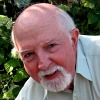 Ernest Ruber and his wife of 55 years, Natalie, came to Southport in 2002 and enjoyed their life together here until her death in early 2011. Ernie retired from Northeastern University where he was Professor of Biology and Ecology. He designed and recently revised the interpretive nature trail at Southport and has written many nature/science articles for Southport Village Voices. He reports for Ernest Ruber and his wife of 55 years, Natalie, came to Southport in 2002 and enjoyed their life together here until her death in early 2011. Ernie retired from Northeastern University where he was Professor of Biology and Ecology. He designed and recently revised the interpretive nature trail at Southport and has written many nature/science articles for Southport Village Voices. He reports forFOCUS on pool tournaments, in which he usually plays and frequently wins. Ernie has two adult children and a grandchild.
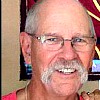 Richard Vengroff, a native of Huntington, Long Island, NY, moved to Southport with his wife Cindy in 2015. Rich earned his doctorate at the Maxwell School of Citizenship & Public Affairs (Syracuse University). He worked with the USAID in Botswana, Africa and worked in Senegal and Morocco, training local leaders. He held teaching and administrative positions at Texas Tech, California Polytech, Kenesaw State (GA) and the University of Connecticut. Cindy, a native of California, held a number of positions with museums in Connecticut, Georgia and finally with Lowell National Park in Lowell MA. Their daughter and grandchildren live in Newton MA.
Special Thanks To
Sig Aiken, Bill Beardsley and Don Rose for their interviews,
Barbara Brink and Barbara Webber
for information about their husbands,
Larry Cron, Andy Jablon, Paul Butters and Carole Bloom
for their photos,
And to my proofreader Billie Kapp
|
|
|
|
|
|
|
|